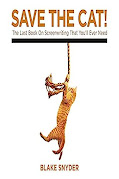How hard can it be? Writing is easy. You sit at a keyboard and bang out words. Somewhere along the way, you run out of words and type: The End. Seriously, I can’t tell you how often I’ve heard those words, or variations of them. If only!
I’ve written before about my journey from pantser to plotter and then to plotster. I’ve shared the various techniques that helped me along the way. The books Take Off Your Pants, 2,000 to 10,000, How to Write a Novel Using the Snowflake Method, and Save the Cat. I confess, I’ve taken nuggets from each of these. In the back of my mind, I was convinced that if I plotted, the writing would be faster. My beginnings, middles, and endings neatly planned out. My job would be to connect the dots and crank out the words. If only!
Instead of powering my writing, I got bored. I knew where the story was going and how it would unfold. Chapter 3: introduce the villain and make him likable. Chapter 23: time for the protag kidnapping, drop the last clue. Chapter 33: don’t know. I was asleep by then. The writing went
quickly, but it lacked life. As a confirmed adrenaline junkie, I need action. So does my writing. What’s an author to do?
Take a hard look at your writing process and goals come to
mind. I don’t have an agent, nor do I have a
publishing contract. No deadlines
but self-imposed ones. Part of me said, “If it ain’t fun, quit.” The lifelong
writer in me recoiled in horror. Okay, quitting is not an option. Instead, I
gave myself permission to have fun and just write. To do that, I had to find
what worked, and kept me on track. My sense of adventure needed some structure.
My current work in process is the result. I sat down with a vague story idea. Then, taking pages from Nick Stephenson’s Story Engines, Shawn Coyne’s The Story Grid, and the book 2,000 to 10,000, I fleshed out the idea. The Story Engine provided some structure to the overall story. The Story Grid set the tone for individual chapters following the scene/sequel format. Using techniques from 2,000 to 10,000, I created bullet points for each chapter—as I wrote them—that described the action. The words may not have flowed, but I had a short-term roadmap that worked for me. My habit of editing each chapter as I wrote, and group editing every five chapters, kept the story perking along and sounding coherent.
For the first time in a long time, I was a happy writer. I spent two years trying to force the square peg of my writing process into the round hole of other writers’ methods. Oddly enough, or maybe not, the process I ended up with is the same one I’d successfully used for my Hayden Kent series. Why change? Good question.
Has anyone else struggled with reinvention only to discover it was an exercise in futility? How did you handle it?




Kait, I'm delighted for you that you have refound your groove. Sometimes the best advice is to ignore all the best advice--or at least most of it.
ReplyDeleteYou are so right, Kait. I think all of us use bits and pieces that make sense to us and how our creativity and brains work.
ReplyDeleteWe all find/stumble into our own groove. I try interesting ideas, but rarely do they stick.
ReplyDeleteAmen, Jim. Thank you!
ReplyDeleteSo true, Susan. Writing is definitely not one size fits all! And that's part of the fun.
ReplyDeleteAgreed, Margaret. Sometimes we are pre-equipped with our own better mousetrap!
ReplyDeleteAs someone who basically "channels" my characters, who create their own stories, I tend to go with the flow when writing. Sometimes I have a very clear idea of what's happening and where it's going; sometimes every scene contains surprises.
ReplyDeleteSince I also write primarily for my own pleasure and without outside-imposed deadlines, I have the leisure to sit back and let the stories create themselves. Some of them I think are pretty good; some of them even I realize are dreadful.
What a great process! Characters definitely have opinions and tell stories in their own way.
ReplyDeleteKait, I've concluded I'm neither a plotter nor a pantser...not even a plantser. I'm more of a flashlighter. I plot as far ahead as I can see through the dark in the beam of a flashlight. Also, my "process" frequently changes from book to book.
ReplyDeleteEach of us has a different process. What works for one, doesn't work at all for someone else. I'm glad you've found your way back to what works for you.
Flashlighter! I love it and can relate. Yes, each of us has a different process, it's makes it fun.
ReplyDelete